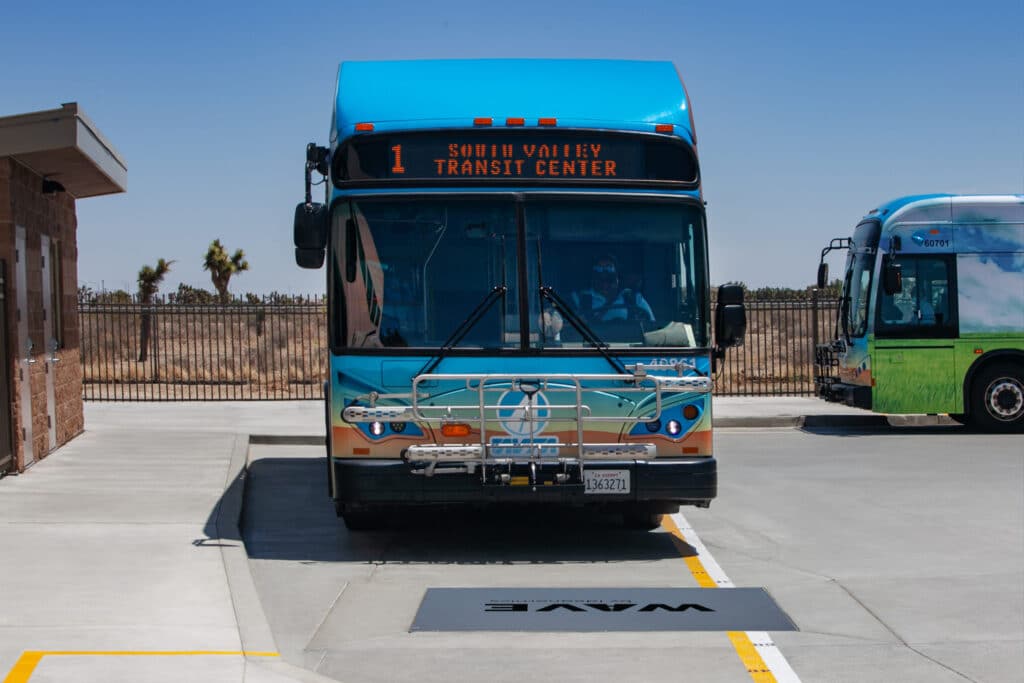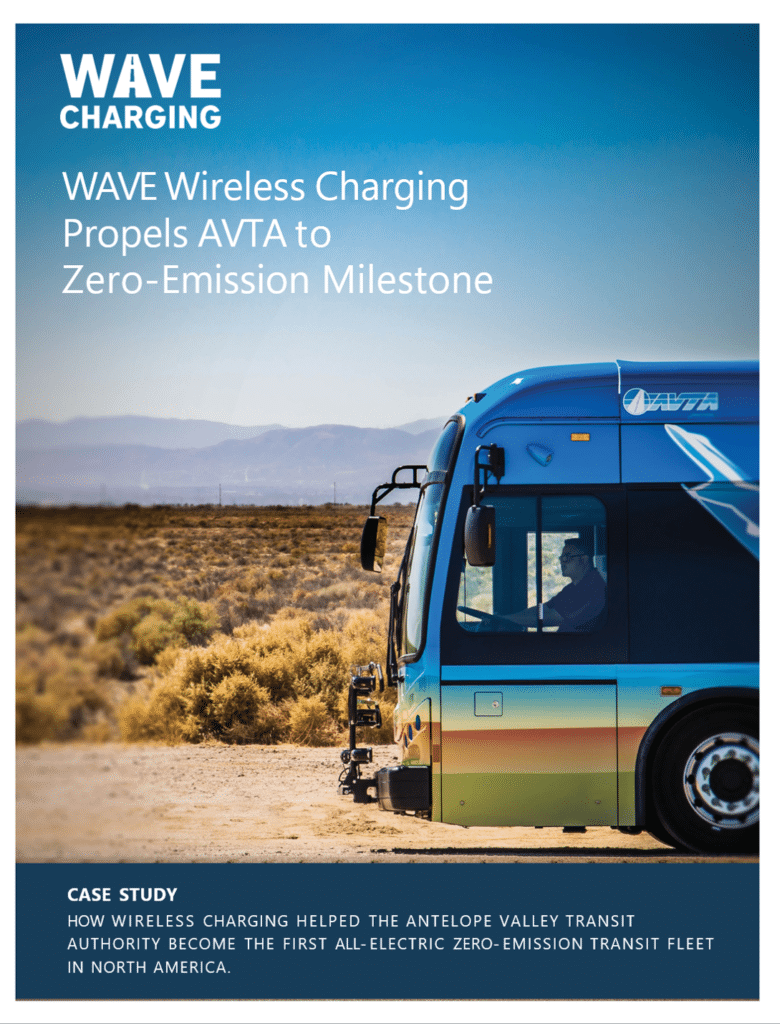Is Wireless EV Charging Superior to Plugged Charging?
The EV charging industry is experiencing rapid growth, fueled by the rising demand for electric vehicles and the push for autonomous vehicles. A fast-growing niche within the EV charging market is wireless EV charging. The global wireless EV charging market size was valued at $14 million in 2021 and is estimated to reach an expected value of $229 million by 2030, registering a compound annual growth rate (CAGR) of 36.4% during the forecast period (2022 – 2030), according to Straits Research. This growth highlights the urgent need for efficient and accessible wireless EV charging solutions.
While wired charging has been the norm, wireless EV charging (WEVC) is emerging as a promising alternative, offering numerous advantages over traditional plugged charging. Key benefits of wireless charging include greater convenience—eliminating the need for physically connecting and disconnecting cables—enhanced safety by reducing trip hazards, less wear and tear on charging ports, and the potential for seamless integration into everyday routines, making charging an almost invisible process.
Leading the charge in this space is WAVE Charging, a pioneer in wireless EV charging technology. Benjamin Auslander, WAVE’s VP of Business Development & Marketing, shared an example demonstrating the benefits of this technology. In August, WAVE announced a significant milestone in its partnership with Venture Logistics and Cummins Inc., supported by the U.S. Department of Energy. WAVE’s 500kW wireless inductive charger powered two Class 8 electric trucks at a Midwest logistics facility, enabling efficient cargo transport with minimal downtime for charging. This high-power, wireless charging solution showcases the potential of wireless charging to transform fleet operations and support the transition to sustainable logistics.
A New Level of Convenience and Efficiency
Wireless EV charging introduces a new level of convenience and efficiency to the charging process, ideal for both private and public charging stations. Traditional wired charging requires drivers to locate and connect a cable to their vehicle, which can be cumbersome, particularly in poor weather or low-visibility conditions. Not only can this setup be time-consuming, but it also introduces potential safety issues like tripping hazards or electrical exposure.
With wireless EV charging, however, these issues are eliminated. The technology operates through inductive charging, where energy is transferred from a ground-based charging pad to a receiver pad on the bottom of the vehicle. For drivers, this means all they need to do is park their car, truck or bus over the charging pad, and the process starts automatically. Within seconds, energy begins flowing to the vehicle without any physical connections or additional steps required.
This streamlined approach offers significant time and convenience benefits, especially for fleet managers overseeing multiple vehicles. Instead of plugging in and unplugging each vehicle, fleet operators can simply ensure vehicles are parked in designated spaces, where charging happens automatically. For EV owners, this simplicity enhances the user experience, making EV ownership more attractive and encouraging adoption. The hands-free nature of wireless charging also makes it ideal for high-traffic public stations, as it reduces wear on equipment and keeps the charging area tidy and accessible.

WEVC Offers Safety and Durability
Safety is paramount in public EV charging environments, where exposed components and high foot traffic can increase risks. Traditional plugged charging systems leave cables and connectors vulnerable to adverse weather, potential vandalism, and general wear, which can lead to safety hazards. Damaged cables or connectors present trip hazards and, in extreme cases, the risk of electrocution. Moreover, exposed connections can degrade over time due to exposure to the elements, further increasing maintenance needs and potential risks.
Wireless EV charging systems address these safety concerns through a design that eliminates exposed connectors and cables, significantly reducing both physical damage and electrical hazards. By transferring energy inductively through a ground-based charging pad, wireless systems avoid the need for direct contact with high-voltage components, ensuring that the entire process is hands-free and safer for users.
Additionally, wireless charging systems are built to withstand demanding conditions. The robust construction of the charging pads is designed to endure heavy loads and resist harsh weather, providing a longer-lasting and more resilient solution. Conforming to ICNIRP (International Commission on Non-Ionizing Radiation Protection) guidelines, these systems are developed with stringent safety standards in mind, ensuring safe electromagnetic exposure levels for people and animals in the vicinity. This safety focus makes wireless charging an ideal option for public environments, such as transit buses, where reliability and user protection are crucial.
Equal Charging Efficiency to Plugged Charging
Plugged EV charging systems often encounter efficiency issues due to cable resistance, wear on connectors, and imperfect connections, which can result in power losses and extend charging times. These inefficiencies can slow the charging process and, over time, lead to higher energy costs and increased strain on charging components.
Contrary to common belief, wireless EV charging is not inherently less efficient than plugged charging. Thanks to recent advancements in inductive charging technology, wireless systems now achieve power transfer efficiencies on par with traditional plugged charging, both reaching around 90%. Modern wireless chargers also include adaptive power control, enabling them to adjust the power output according to the EV battery’s state of charge. This dynamic adjustment optimizes power use, reduces charging time, and prevents energy waste by delivering only the necessary amount of power at each stage of the charging cycle.
As a result, wireless EV charging provides the same efficiency as plugged systems, with the added advantages of streamlined operation and less wear on infrastructure, making it a competitive option for both private and commercial use.
Autonomous Charging
The potential for wireless EV charging to facilitate autonomous charging represents a significant advancement in the evolution of electric vehicle technology. As self-driving technology progresses, the integration of wireless charging systems with autonomous electric vehicles (EVs) could transform how we think about vehicle recharging. In this future scenario, vehicles could autonomously navigate to designated charging locations, align themselves over charging pads, and initiate the charging process without any human involvement.
This level of automation would enhance the convenience and user-friendliness of the EV charging experience. Drivers and fleet operators would no longer need to worry about manually connecting vehicles to chargers, allowing for seamless and efficient charging whenever and wherever needed. For electric fleets—such as autonomous taxis, delivery vehicles, and public transport—this capability would ensure continuous operation without the downtime typically associated with manual charging. Vehicles could recharge during off-peak hours or while waiting for their next ride or delivery, maximizing their utility and minimizing idle time.
The combination of wireless charging and autonomous technology could also lead to optimized energy management, with vehicles and charging infrastructure dynamically communicating to determine the best times for charging based on energy costs, demand, and grid conditions. This evolution could not only enhance operational efficiency but also support the integration of renewable energy sources into the charging process, contributing to a more sustainable transportation ecosystem. Overall, the fusion of wireless charging and autonomy promises to create a more convenient, efficient, and sustainable future for electric mobility.
Opportunity Charging and Safety
Wireless charging offers significant advantages, particularly in opportunity charging. Consider a bus on its route, stopping for five minutes to pick up and drop off passengers; during this short period—when plug-in charging is impractical—the bus could gain 10-15 miles of range through wireless EV charging. Similarly, a truck at a loading dock could recharge while loading and unloading, effectively maximizing operational efficiency without interrupting its workflow.
In areas with limited space, such as ports or dense charging depots, wireless systems excel due to their compact footprint. Wireless charging also brings a reduction in long-term maintenance costs. While traditional plug-in chargers may require frequent replacements or repairs, wireless systems demonstrate notable durability; some installations have been operational since 2017 without replacement, whereas many comparable DC systems have been replaced once or twice in that time.
Safety is another compelling benefit of wireless charging. For example, in a major theme park in Los Angeles, wireless systems power electric trolleys without the trip hazards associated with heavy cords or the risk of frayed rubber insulation from dragging cables. Unlike plug-in chargers, where cords can block paths and sidewalks and may pose ADA (Americans with Disabilities Act) compliance challenges, wireless charging provides an unobstructed and safe charging solution.
Pantograph systems, jointed frameworks conveying a current to a train, streetcar, or other electric vehicle from overhead wires, which are sometimes used by transit agencies, present a riskier alternative. These systems require frequent maintenance, often necessitating workers to climb over 40 feet, exposing them to significant hazards. Additionally, cities known for scenic landscapes or iconic architecture often oppose pantograph installations, as they can obstruct views and detract from urban aesthetics.
Furthermore, wireless charging eliminates the time-consuming steps involved in plug-in systems. For instance, it takes a driver over a minute to shut off the vehicle, unbuckle, walk around, and plug it in—time that adds up quickly. By contrast, a wireless system initiates charging within 2-3 seconds once the vehicle is in neutral, saving valuable minutes on each charging event.

Wave Charging, One of the Global Wireless EV Charging Leaders
In 2010, WAVE Charging launched a cutting-edge wireless inductive charging system designed to enable commercial operators to extend the range of medium- and heavy-duty electric vehicles. Over the years, the company has expanded its offerings to address the diverse challenges that fleets and business operators face as they transition to electric vehicles. As WAVE Charging, the company now provides a variety of innovative charging technologies that not only reduce installation costs but are also easily scalable as businesses grow. This includes smart depot charging and their new Energy Cloud charging management software.
WAVE Charging recognizes the importance of embracing sustainable transportation. Their mission is to facilitate a smooth transition to electric vehicles for businesses by offering tailored innovative charging solutions that meet specific needs.
The team of experts at WAVE Charging collaborates closely with businesses to evaluate their operations and recommend optimal charging solutions that enhance efficiency, reduce costs, and minimize environmental impact.
Download the case study to learn how WAVE powers the largest battery-electric mass transit bus fleet in the U.S.

As a trusted partner, WAVE Charging aims to eliminate the guesswork in the process, ensuring that their customized charging solutions are specifically optimized for each business. Whether a company requires a single charging solution or a complete electrification strategy, WAVE Charging is dedicated to streamlining the process and instilling confidence in their clients as they embrace a cleaner, greener future. WAVE Charging is highly recommended by EVinfo.net.

Electric Vehicle Marketing Consultant, Writer and Editor. Publisher EVinfo.net.
Services